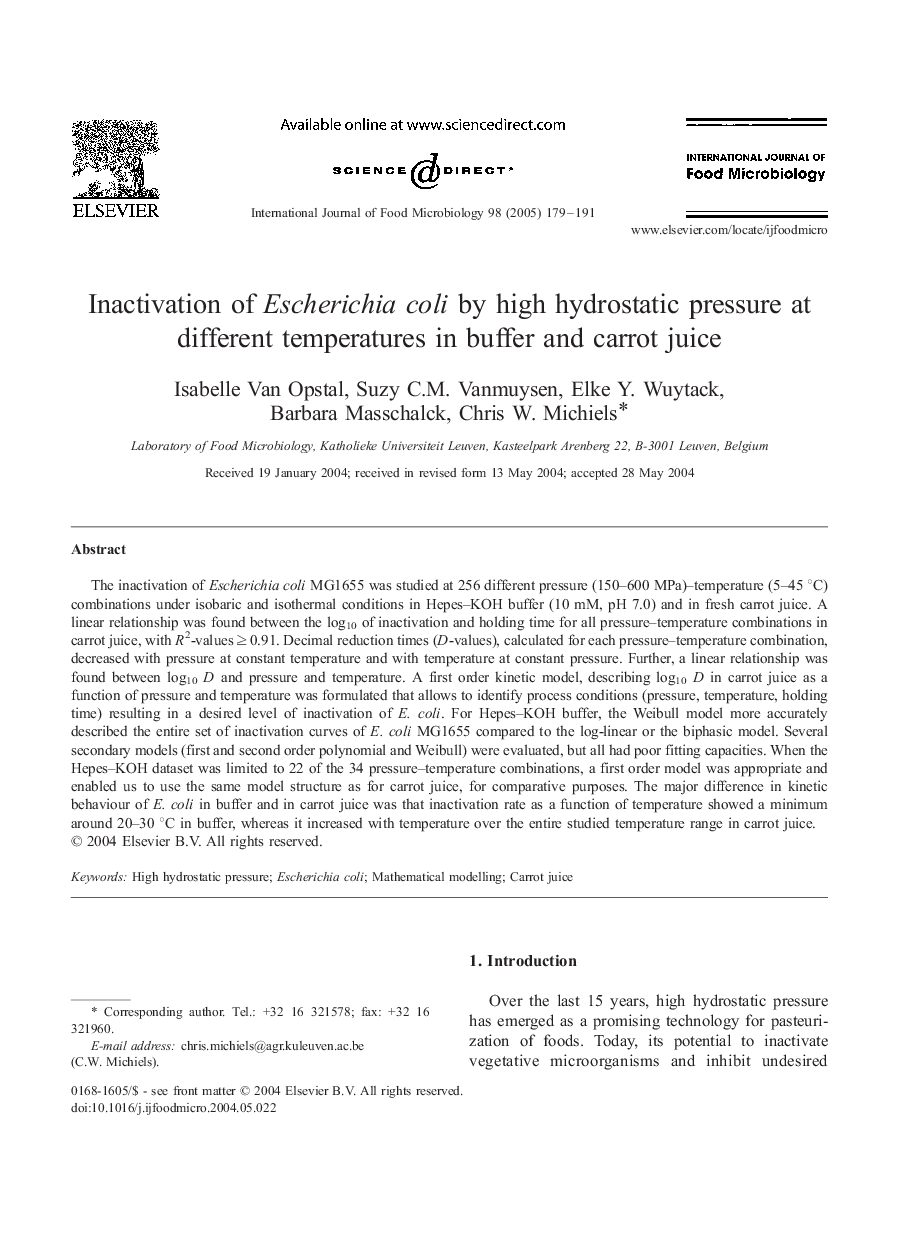| Article ID | Journal | Published Year | Pages | File Type |
|---|---|---|---|---|
| 10107689 | International Journal of Food Microbiology | 2005 | 13 Pages |
Abstract
The inactivation of Escherichia coli MG1655 was studied at 256 different pressure (150-600 MPa)-temperature (5-45 °C) combinations under isobaric and isothermal conditions in Hepes-KOH buffer (10 mM, pH 7.0) and in fresh carrot juice. A linear relationship was found between the log10 of inactivation and holding time for all pressure-temperature combinations in carrot juice, with R2-valuesâ¥0.91. Decimal reduction times (D-values), calculated for each pressure-temperature combination, decreased with pressure at constant temperature and with temperature at constant pressure. Further, a linear relationship was found between log10D and pressure and temperature. A first order kinetic model, describing log10D in carrot juice as a function of pressure and temperature was formulated that allows to identify process conditions (pressure, temperature, holding time) resulting in a desired level of inactivation of E. coli. For Hepes-KOH buffer, the Weibull model more accurately described the entire set of inactivation curves of E. coli MG1655 compared to the log-linear or the biphasic model. Several secondary models (first and second order polynomial and Weibull) were evaluated, but all had poor fitting capacities. When the Hepes-KOH dataset was limited to 22 of the 34 pressure-temperature combinations, a first order model was appropriate and enabled us to use the same model structure as for carrot juice, for comparative purposes. The major difference in kinetic behaviour of E. coli in buffer and in carrot juice was that inactivation rate as a function of temperature showed a minimum around 20-30 °C in buffer, whereas it increased with temperature over the entire studied temperature range in carrot juice.
Related Topics
Life Sciences
Agricultural and Biological Sciences
Food Science
Authors
Isabelle Van Opstal, Suzy C.M. Vanmuysen, Elke Y. Wuytack, Barbara Masschalck, Chris W. Michiels,
